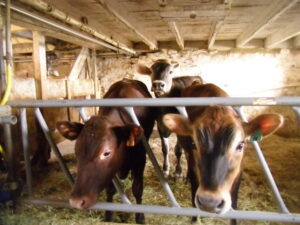At the end of September, USDA released the Small Grains 2021 Summary Report. This report provides useful year over year yield information for barley, oats, rye and wheat (spring and winter planted; and by type) and comments on the crop progression from planting to harvest.
National prices paid for commodities (cotton, corn, soybeans, small grains) and prices received for eggs, poultry, cattle, hog, and dairy can be found at https://www.nass.usda.gov/Charts_and_Maps/Agricultural_Prices/

 nd Poultry Veterinary Care Services Series, Part II: Federal Resources
nd Poultry Veterinary Care Services Series, Part II: Federal Resources